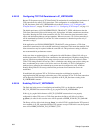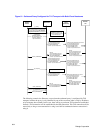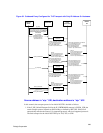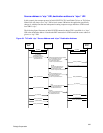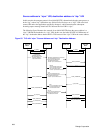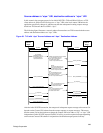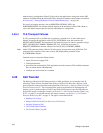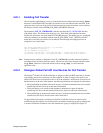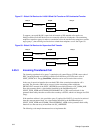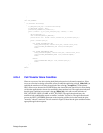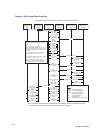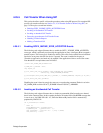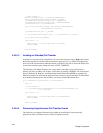310
Dialogic Corporation
outbound proxy configuration. Global Call also allows the application to change the contact URI
scheme to be different than the initial INVITE by setting the complete contact header as described
in Section 4.9.5, “Setting SIP Header Fields for Outbound Messages”, on page 183.
For out-of-call request messages, such as REGISTER, OPTIONS, INFO, and
SUBSCRIBE/NOTIFY, the transport method depends on the destination address URI scheme as
well as the default transport protocol and any outbound proxy configuration.
4.24.4 TLS Transport Failures
If a TLS connection fails to establish due to a timeout, a network error, or some other reason,
Global Call notifies the application with a GCEV_EXTENSION event with extension ID
IPEXTID_RECEIVEMSG. The metadata for this extension event will contain a parameter of type
IPSET_SIP_REQUEST_ERROR / IPPARM_SIP_SVC_UNAVAIL whose data is a
REQUEST_ERROR data structure with the error code IP_SIP_NETWORK_ERROR.
Note: Unlike TCP connection failure, Global Call will not retry the transaction using UDP if the TLS
connection fails, regardless of the value of the E_SIP_RequestRetry parameter in the
IP_VIRTBOARD structure.
Common causes of connection failure include:
• remote UA does not support TLS
• TLS negotiation fails
• post-connection assertion fails (TLS negotiation succeeds but remote TLS certificate hostname
does not match request URI hostname)
• certificate has been revoked or is outdated
4.25 Call Transfer
The Dialogic
®
Global Call API library provides six APIs specifically for call transfer in the IP
technology. These APIs are described in the Dialogic
®
Global Call API Library Reference with
protocol-specific variances described in the subsections of Section 8.3, “Dialogic
®
Global Call API
Function Variances for IP”. This section describes general considerations for implementing call
transfer as well as details specific to H.450.2 (part of the H.323 protocol suite) and SIP protocols.
For H.450.2-specific call transfer scenarios see Section 3.2, “Call Transfer Scenarios When Using
H.323”, on page 57, and for SIP-specific call transfer scenarios, see Section 3.3, “Call Transfer
Scenarios When Using SIP”, on page 74. The topics covered here include:
• Enabling Call Transfer
• Dialogic
®
Global Call API Line Devices for Call Transfer
• Incoming Transferred Call
• Call Transfer Glare Condition
• Call Transfer When Using SIP



